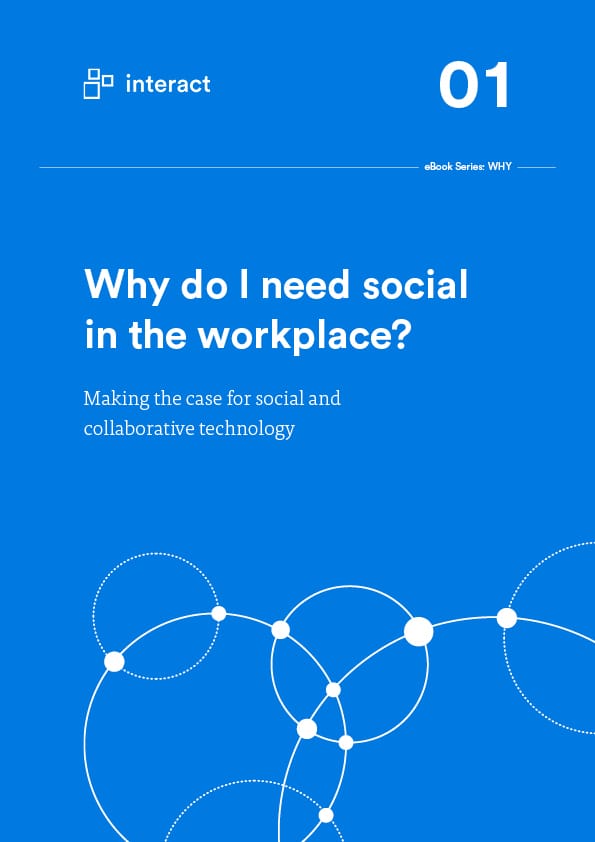6 ways to combat loneliness in the digital workplace
As employees, we spend close to a quarter of our lives in the workplace.
For such a drastic amount of time, it is no wonder that feeling alone at work can have very negative implications for the modern employee. Despite the rise in popularity of offices designed to foster interaction and good communication, workplace loneliness is still very much a problem – and one that is gaining more and more recognition.
Over one-third of employees report not having strong relationships at work. Is it because we spend our 9 to 5 with our eyes glued to our computer screens? Is it because we do more emailing, commenting, and sharing than we do communicating in real life about our work problems?
Even with all the advances in social technology, we still find it difficult to connect with those around us – why?
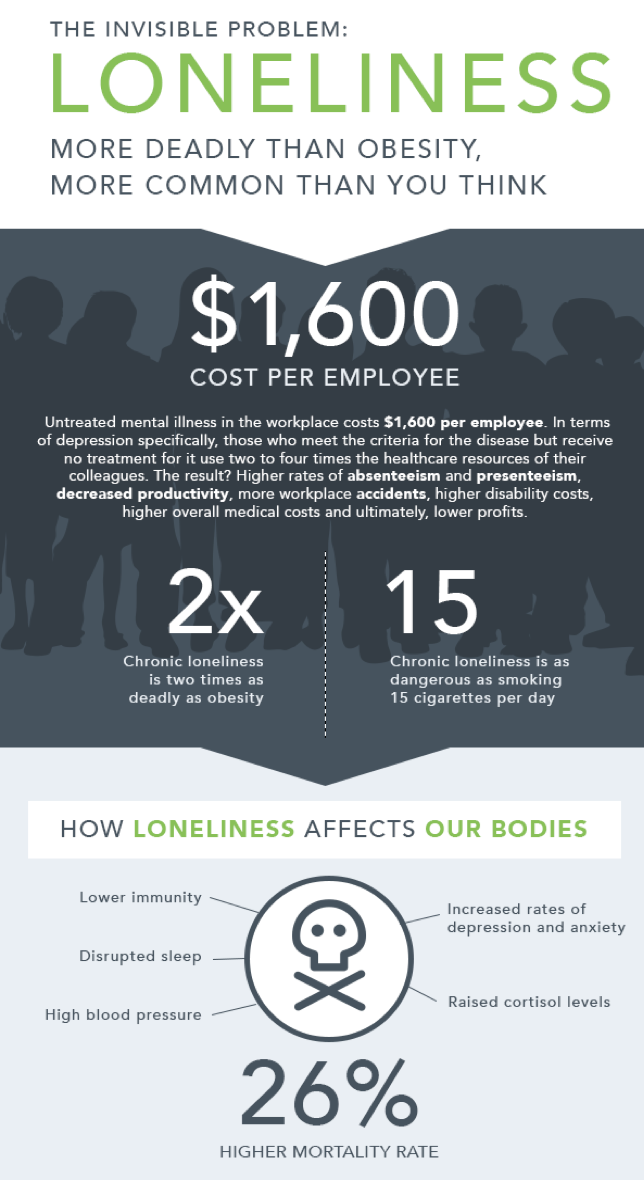
While tech often gets blamed for dividing people, the fault may lie more with humans themselves; perhaps it doesn’t come down to the technology we use, but how we use it, or what we use it for. Perhaps there are personal or even professional factors behind the scenes that we’re unaware of. We may have an introverted personality struggling to find a place amongst a team of extroverts or someone whose lack of experience or confidence in the product or service you provide makes them feel unable to speak up and feel ‘part of the team’.
Finding the reason for workplace loneliness can be difficult, therefore, as the phenomenon can be caused by a wide range of factors.
Why is loneliness a business concern?
Research has shown that feeling excluded, lonely, or socially isolated can be worse than being harassed or bullied.
The Campaign to End Loneliness defines the phenomenon as a “Lack or loss of companionship, which happens when we have a mismatch between the quantity and quality of social relationships that we have, and those we want.” Over 40% of American adults report feeling lonely, although research suggests that number in reality may be much higher. This extends to work; even to the top level, where half of CEOs report feeling lonely in their roles.
These feelings of isolation are harmful to health and lead an individual to not only believe they aren’t worthy of attention but also lead to strong feelings of dissatisfaction with the organization. This isolation and emotional discomfort is proven to reduce employee commitment and increase their chances of leaving: an emotional withdrawal from the organization, as highlighted in a research project by California State University and the Wharton School of Business.
It can also have a domino effect: emotionally checked-out employees are more like to be negative about their organization, which can trigger that same feeling of disgruntlement in their peers.
Despite this, it is still typically regarded as a personal problem, rather than a business one. In the face of all these potential effects, it is even more important to ensure that your employees feel like part of a team instead of feeling a destructive distance. Here are a few tips to help your organization combat isolation in the workplace.
1. Encourage open communication
Employees spend such a large amount of time at work that the thought of experiencing constant discomfort can be a source of stress. Work is supposed to be one of the spaces where we have the most social contact; however, many factors can make that an unlikelihood. One of the biggest reasons is the failure of the fated employer-employee relationship.
In many instances, this will be the first interaction between an employee and an organization- because of this, it is expected that the two form a relationship. But what if they don’t? Many factors can make it difficult for an employee to establish a partnership role with their supervisor. Yet, this basic level of trust is needed to successfully integrate an employee into an environment where they not only feel comfortable but also feel safe opening that line of communication.
Work on those one-on-one interactions with your employees. Welcome all your new hires. Challenge and encourage your team. When employees feel that their employer goes out of their way to understand them, it reinforces a strong sense of belonging. A sense that can quickly become a barrier between them and loneliness.
2. Keep your employees in the loop
Lack of knowledge is a source of frustration in any situation, whether it be in your personal life or your professional life. Nothing can create a chasm between employees more than keeping secrets. Feeling like you aren’t privy to information or high enough on the totem pole to be aware of big changes creates a growing sense of loneliness that could easily be prevented by being forthcoming.
Hiding confidential information is understandable, but things like forgetting to cc someone on a department-wide email or not inviting a member of your team to a partner meeting only serve to create secluded and unhappy employees.
Don’t check out: check in. Make sure your people feel like they know what’s going on at all times. That may mean that you have to take extra care when sending out memos. You may also need to make more of a conscious effort to provide enough information to make your employees comfortable. Ultimately, it will be worth it; increasing that trust will make them feel welcome and needed – two feelings that can readily battle feelings of isolation.
3. Foster “team spirit”
Nurture relationships between your employees! The natural progression of friendships is not always a simple thing. Sometimes, people may need an extra push. This can come in the form of happy hours, in-office events or holiday parties; anything that will put your employees in situations where they can form bonds with people they may not have had the chance to meet before.
Most people are more inclined to socialize in relaxed settings where they have the opportunity to hang out in groups. Why not schedule a company outing? Bowling perhaps? Getting your employees to work together in team competitions means that they can form stronger bonds, whether it be through winning or losing.
Talk to your employees and event coordinators about designing some events that you feel will promote a healthy work-life balance. The more chances people have to get together the more likely they are to form bonds in the workplace that are meaningful and lasting.
4. Personalize digital communication
Social and digital technologies have become some of the most used tools in the workplace, so much so that many people never meet the people they are communicating with daily. With social media, video chat, instant messaging, and the like, people rarely get the opportunity to see the facial expressions and mannerisms of the people on their teams. Is this barrier a disadvantage? Some may think so; but if it is, it can easily be overcome.
The world has become so advanced that we have access to a larger palette of expression than ever before. We can communicate across language barriers. Speak to individuals without the use of words. How is all this possible?
We can credit this growth in part to communication tools like emojis and GIFs. These reactionary figures require no words to get their feelings across. Forget a punch line – a well-timed GIF can have all the effects of a well-timed joke; even more so as many GIFs are taken from well-known shows and situations that make them even more relatable.
Writing a thank you email? Send a smiley along. Making a blog post on the intranet about a work event? Throw in a couple of GIFs. There is meaning behind these little figures that have been culturally encoded to represent the flashes of people’s personalities. These meanings increase the connection in ways that person-to-person contact may not be able to. In an increasingly digital age, many individuals may feel more comfortable interacting this way: removing the corporate barrier to these more informal types of communication encourages those individuals to come “out of their shell”.
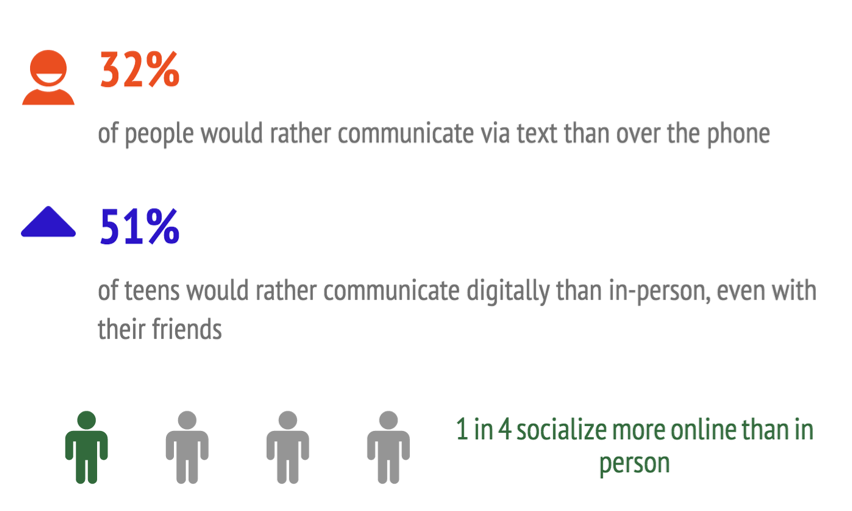
Technology can also play a role in putting a ‘face to the name’ of peers who may never meet in person, helping to foster even virtual workplace relationships that can make a difference in feelings of isolation and loneliness. Put staff photos against their employee directory entry; add personal as well as professional details, such as outside work interests, to allow employees to strike common ground. Use Facetime or video conferencing to conduct virtual meetings. Even these small things can help your employees feel a sense of connection to their peers and help break down feelings of isolation.
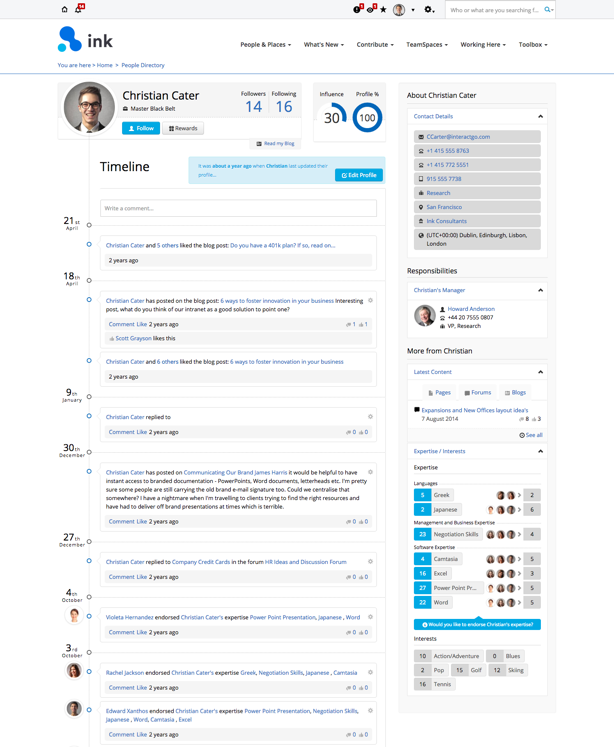
(Rich profiles on your intranet or company directory that include not only professional skills or expertise, but personal interests, introduce a social element to the digital workplace that will help employees connect. Enabling digital relationships, rather than faceless interactions over email, can go a long way to combating loneliness at work.)
5. Try some in-person communication
The ease of digital communication does not mean that we should neglect the benefits of in-person. While you may not be losing anything by choosing digital communication as your primary method, you are also not gaining as much as you would in a situation where you utilize both.
Digital communication frees up time and energy by taking care of those conversations that may not be high profile. However, transparency is one of the most effective ways to reinforce company bonds and conversation can greatly benefit from reading body language and social signals.
The feeling you get from face-to-face interaction can often have a stronger effect in many instances. For example, having a smiling face invite you to a small company get-together is more personal than receiving an email invite to the event. The gesture becomes more valuable when you can feel the genuine intent and acceptance behind the offer.
Encourage social interaction between your employees inside and outside the workplace. Convince them to walk over and deliver a message rather than just send a quick email. For many employees who may feel lonely or socially isolated, stepping away from the convince of digital communication may be just what they need.
6. Take action
Personalities differ greatly amongst individuals; some people may be outgoing extroverts and others may be strong introverts. A big part of making people feel welcome is understanding the kind of person you’re dealing with and treating them accordingly. You cannot expect an introvert to introduce themselves to the company culture without any encouragement. Some people need more than just words to feel comfortable taking that plunge. Actions speak much louder than words.
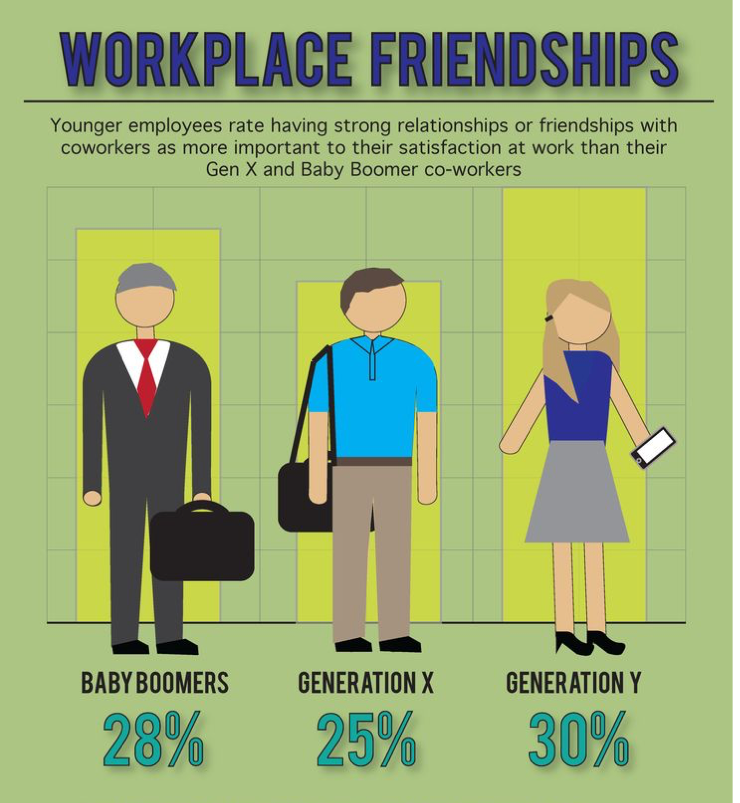
Take the time to learn about your employees and co-workers. Find out the things that interest them and observe their habits and tendencies. For instance, if you notice that your co-worker drinks a lot of coffee, maybe buy them a cup next time you get a chance. You’ll find that the gesture makes them feel more included than if you had asked beforehand.
Make ending loneliness a priority
As a huge chunk of people’s lives will be spent at work, it wouldn’t hurt to have at least one person to talk to daily. Not everyone needs to be the friendliest person in the office, but taking the time to make these connections goes a long way in increasing the culture and productivity of the office.
Don’t assume loneliness isn’t work-related. Many incidences of withdrawal can indeed be attributed to other relationship, emotional, or health-related issues that perhaps spill over into work; however, without asking, how do you know for sure that work isn’t the cause? Even if it isn’t work-related, perhaps there’s a way you can provide support, or signpost that individual to someone or somewhere to get support, and help combat those feelings of loneliness.
Keep an open mind toward others; making everyone feel included is the best way to boost positivity and strengthen the bonds of your team.
